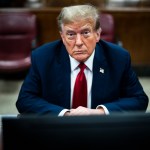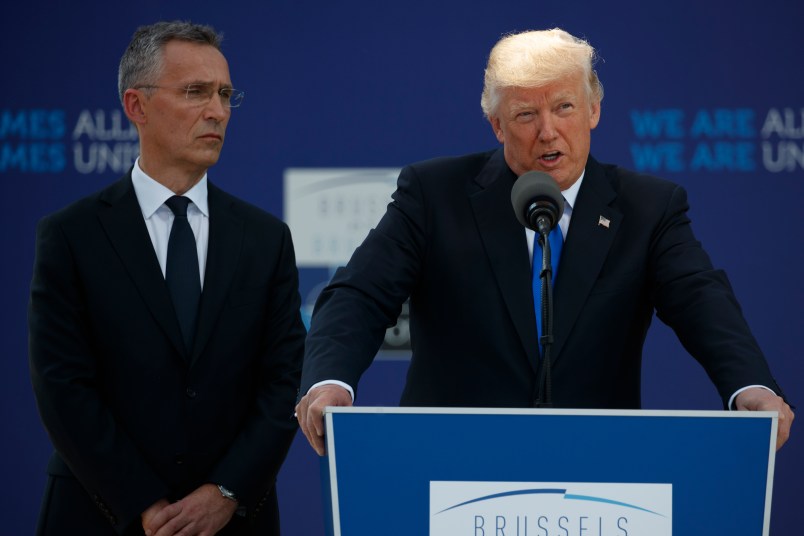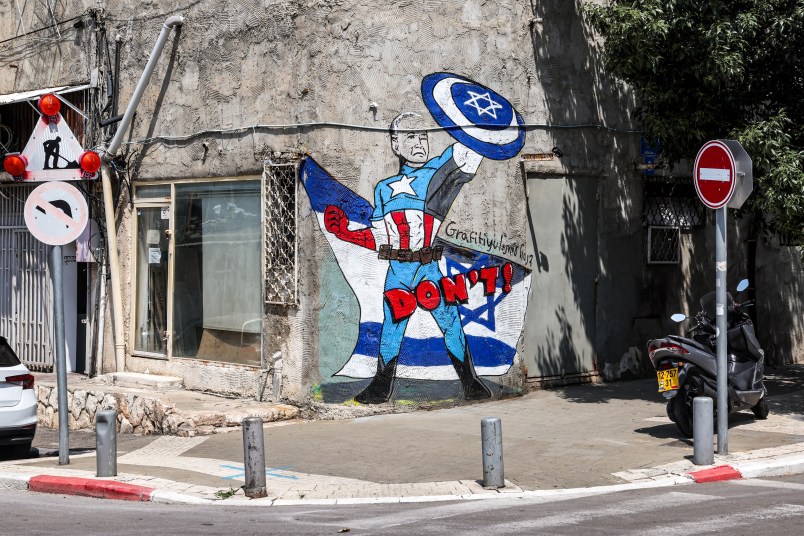We’ve had a number of disquieting reports today from President Trump’s trip to Brussels and a meeting of NATO leaders. I want to step back from the particulars and look at the larger picture.
As I noted earlier, Trump used a very high profile and public moment to chastise our NATO allies for not paying enough for their own defense and actually owing the US vast sums of money. As I explained below, this is demonstrably false, both in a general and specific sense. Beyond the inaccuracy, Trump’s comments clearly envision a transformed and debilitated NATO, one that is one half protection racket, one half high-dollar membership golf resort. You pay your dues or you’re out. It’s a service, not a commitment.
Trump also declined to pledge his support for Article 5 of the North Atlantic Treaty, the provision that commits all members states – but most importantly the US – to defend members who are attacked. Article 5 isn’t a key part of NATO. It’s the cornerstone. In many respects it is NATO.
Meanwhile, a report in der Spiegel suggests Trump harshly attacked Germany and its export practices in a meeting of NATO/EU leaders. His team also created confusion among their EU interlocutors by appearing not to understand that EU member states only make trade deals as a group. It’s a bit hard to decipher precisely what was being discussed here. Was this really a misunderstanding or a bullheaded effort to make a point?
It harkens back to the line the Trump braintrust was pushing last December and January, which was that they intended to pursue a plan of breaking up the EU, using a newly Brexited UK as their tool to tear it apart. This was clearly back in a period of maximal Trumpite triumphalism, when they fantasize about rolling the whole world before their ‘revolution.’
Times change; reality intrudes; compromised advisors are tossed aside.
But this cluster of signs and provocations suggests strongly that we are still in the same place, still in a position where the President of the United States is actively seeking to undermine NATO and – through different modalities and for slightly different reasons – the EU as well.
Each of these aims, each of these goals lines up more or less perfectly with the strategic ambitions of the Russian Federation, which sees NATO as a bulwark of Western/US military strength hemming Russia in behind borderlands it sees as within its proper sphere of influence and with the EU, representing a liberal internationalist order which it has set itself against. A lot of this thinking comes from the Bannonite/”nationalist” part of the Trump crew, though Trump has espoused elements of this vision for years. That group, in turn has deep ties to various European rightist parties which share this anti-NATO, anti-EU, politically illiberal stance. Many or most are funded by Russia. Whether or not this is being done on Putin’s behalf, it clearly lines up within Putin’s and Russia’s aims. Putin wants a fragmented Europe; Trump does too.
We should not lose sight of this elemental fact in what seems like a herky-jerky parade of provocations and gaffes on this latter portion of Trump’s trip. The Russia story isn’t just what happened last year. It continues.







